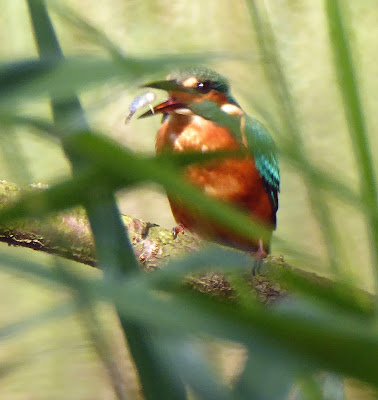Welcome to my Tree Following post for August and early September 2016.
These tree posts form part of a wider project initiated by Lucy Corrander from the Loose and Leafy blog and continued by Pat at The Squirrelbasket.
I am based in Suffolk, UK, where I have been keeping an eye on a Silver birch, B. pendula. I have added in a small Cherry sapling, Prunus avium Sylvia, for my second tree.
You will find the other Tree Follower links by clicking through to the Mr Linky button here ... so do take the chance to have a look at the new posts!
*
It has occurred to me for a while that my Tree Following posts are becoming a little unwieldy. I haven't entirely decided to what to do about this yet, but am thinking along the lines of keeping the extensive (and ever growing) list of sightings made so far, 'in, on, under and around' my trees, in a separate post. Please watch this space.
We have had a busy month and I am already running a little behind schedule, so I shall focus on a limited number of sightings.
First and foremost, in another year when butterfly sightings have largely been 'down', I am thrilled to report that we had a new garden record: a Painted Lady landed by the Silver Birch on 13 August.
These are such fine insects, and you can read about their migration here.
While I am on the subject of butterflies, do take a look at the recently released 2015 report for the UK Butterfly Monitoring Scheme report. There are a few bright patches but the general butterfly trend seems to be a downward one, making it all the more crucial that we plant flowers to provide nectar and preserve existing habitats.
While I am on the subject of butterflies, do take a look at the recently released 2015 report for the UK Butterfly Monitoring Scheme report. There are a few bright patches but the general butterfly trend seems to be a downward one, making it all the more crucial that we plant flowers to provide nectar and preserve existing habitats.
As for the Silver Birch itself, it is scattering vast quantities of seeds to the winds. When the sun is in the right direction, I find myself watching these miniature keys as they flit hither and thither. A number ended up in the rather extensive web of a large spider next to the Cherry Tree. I wished I had had my camera with me at that point so that I could have tried to identify the splendid web-maker.
 |
| Silver Birch |
This evening at 7pm I watched a fairly large dragonfly (it was too fast for me to see it properly) circling round beneath the foliage of the Silver Birch. It has been a warm day here, with cloud and bright spells, and I can only guess that the dragonfly was hoovering up mouthfuls of small midges or flies that flitted around the lower branches. We occasionally have dragonflies in the garden as we live in close proximity to a local nature reserve with a stream, but I have never seen them here at dusk before.
The small Cherry Tree has continued to grow upwards. Something is still eating its leaves, but the general picture is one of health. It looks as though we might need to trim the Euonymus back again...
 |
| Cherry Tree from above |
I can hardly believe that the next TF post will be in October, though, having said that, we are already on to our second crop of (wild) Blackberries. The first crop fell victim to the rain and turned mouldy, but the birds and butterflies are thoroughly enjoying the new batch of fruit.
 |
| This photo of the Comma was taken this evening, when... |
 |
| ... I also noticed this ?toadstool near the Cherry. |
All aboard for the season of mists and mellow fruitfulness...
And finally ...
MY PREVIOUS TREE FOLLOWING POSTS
- July 2016 to August 2016
- June 2016 to July 2016
- May 2016 to June 2016
- April 2016 to May 2016
- March 2016 to April 2016
- February 2016 to March 2016
- January 2016 to February 2016
- December 2015 to January 2016
- November to December 2015
- October to November 2015
- September to October 2015
- August to September 2015
- July to August 2015
- June to July 2015
- May to June 2015
- April to May 2015
- March to April 2015
- February to March 2015
- January to February 2015
- November to December 2014
- October to November 2014
- September to October 2014
- August to September 2014
- July to August 2014
- June to July 2014
- May to June 2014
- April to May 2014
- March to April 2014
- February to March 2014




















